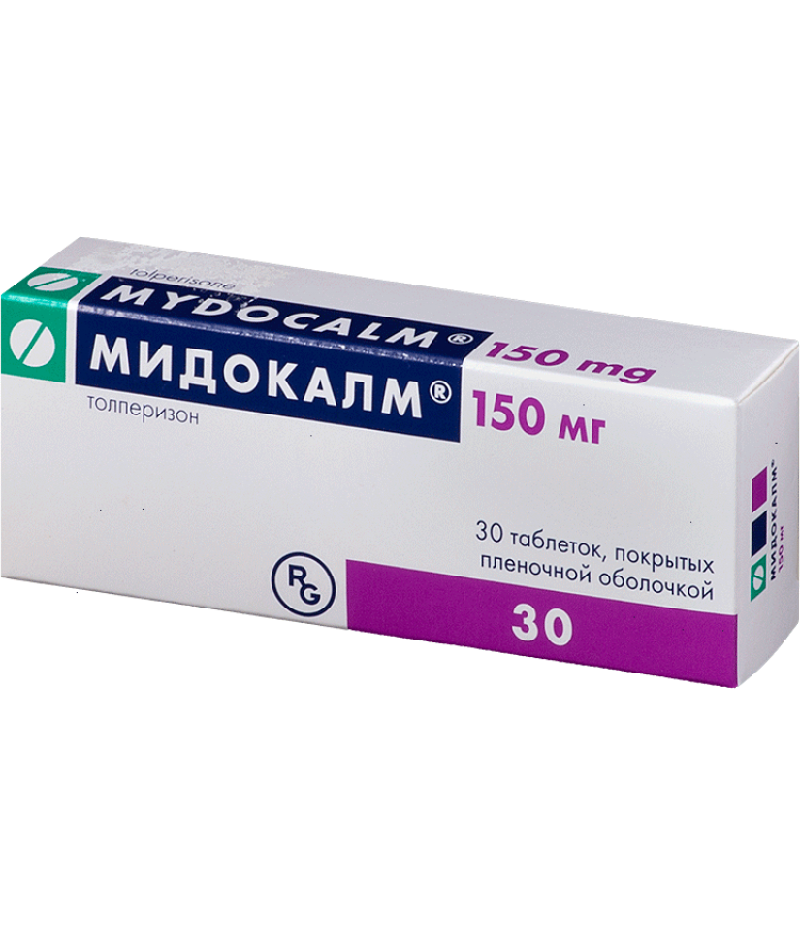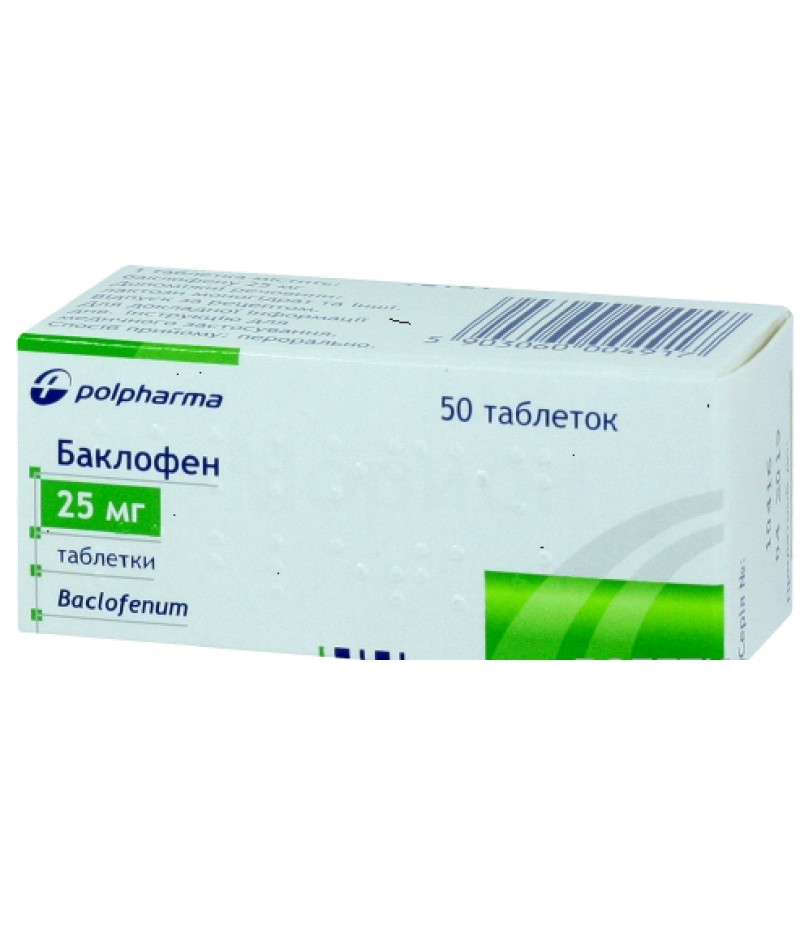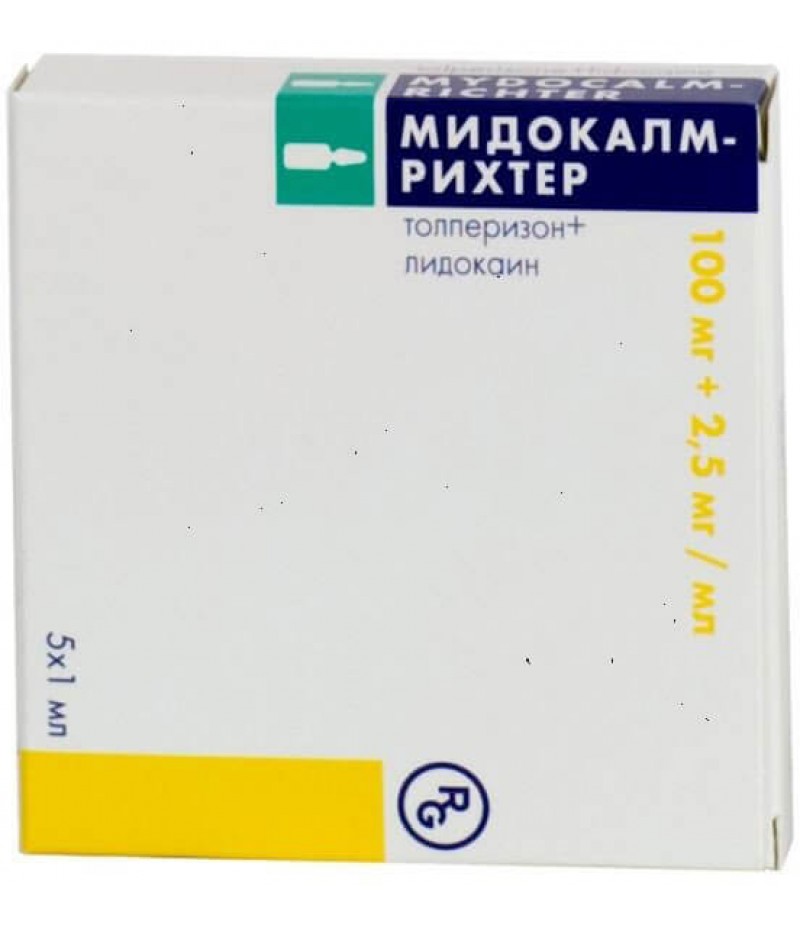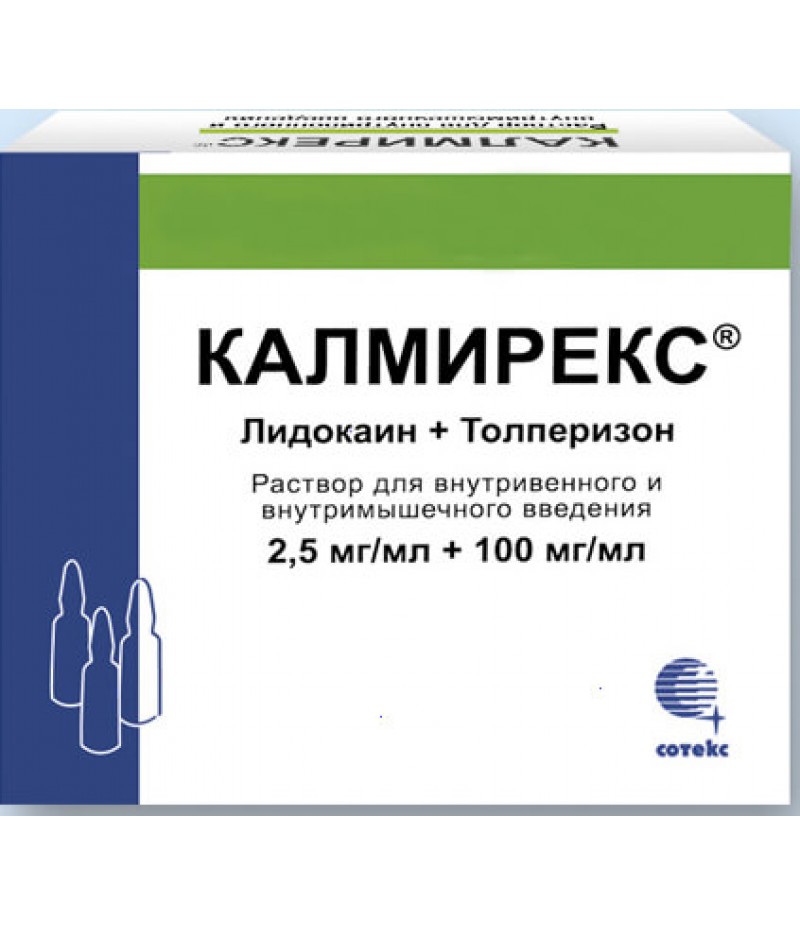Mydocalm tabs 150mg #30
- $19.40
- 3 or more $19.20
- Availability:In Stock
Mydocalm user manualYou can buy pills Mydocalm on this pageCompositionInternational Nonproprietary Name of the Preparation (INN): Tolperisone.One tablet Mydocalm contains in its composition 50 or 150
Tags: tabs
Mydocalm user manual
You can buy pills Mydocalm on this page
Composition
International Nonproprietary Name of the Preparation (INN): Tolperisone.
One tablet Mydocalm contains in its composition 50 or 150 mg tolperisone hydrochloride as an active substance, as well as auxiliary components:
citric acid monohydrate (Acidum citricum monohydrate);
silicon dioxide colloid (Silicii dioxydum colloidale);
stearic acid (Acidum stearicum);
talc (Talcum);
microcrystalline cellulose (Cellulosum microcrystallicum);
corn starch (Amylum maidis);
lactose monohydrate (Lactose monohydrate).
The film coating, which is coated with tablets, contains:
silicon dioxide colloid (Silicii dioxydum colloidale);
titanium dioxide;
lactose monohydrate (Lactose monohydrate);
macrogol 6000 (Macrogol 6000);
hypromellose (Hypromellose).
Form of issue
Medicine Mydocalm is available in the form of film-coated round biconvex form of tablets. On one side, each tablet has an engraving "50" or "150" (depending on the amount of active substance in it).
The color of the tablets is white or almost white (even on the break), the smell is mild, specific.
pharmachologic effect
Mydocalm belongs to the pharmacotherapeutic group "Miorelaxants of the central action" and is a drug that contributes to a decrease in the tone of skeletal musculature. The mechanism of action of the drug is not fully understood.
Pharmacodynamics and pharmacokinetics
Mydocalm prevents the destruction of cell membranes and provides a pronounced membrane-stabilizing effect. The mechanism of this action is based on inhibiting lipid peroxidation processes and modulating the activity of membrane-bound enzymes.
In addition, the drug acts as a local anesthetic, as well as inhibits the conductivity of nerve impulses in the primary afferent (from Latin "afferens" - bringing) nerve fibers and motor neurons - nerve cells responsible for carrying information on effectors (usually muscles) from the central nervous system.
The latter results in the blocking of the polysynaptic and monosynaptic reflexes of the spinal cord.
It is considered probable that Mydocalm has the ability to secondarily inhibit the release of mediators. This is provided by inhibiting the intake of calcium ions (Ca2 +) at the places of functional contact between neurons in which information is transmitted from one cell to another (or, in other words, into synapses).
In the brainstem, Mydocalm eliminates the relief of the spread of excitation along the reticulospinal path (reticulospinal tract).
Promotes increased peripheral blood flow (regardless of the influence of the central nervous system), reduces the pathologically increased muscle tone, eliminates muscle rigidity, reduces the severity of pain in the muscles, eliminates or reduces the severity of violations of voluntary active movements.
This effect is ensured by the ability of Tol- perison to exert a weakly expressed antispasmodic and adrenoblocking action.
Due to the activity of Tolperisone, Mydocalm also reduces the toxicity of the indole alkaloid strychnine, suppresses the increase in reflex excitability caused by it, and has vasodilating properties.
Some evidence suggests that the drug has a selective suppressive effect on the caudal (from the Latin "cauda" - tail, tail) part of the formation of the spinal cord towards the thalamus in the rostral direction (that is, to the cortex). As a result, the severity of spastic phenomena decreases.
According to Wikipedia, Tolpidizone, part of Mydocalm, also causes a central H-cholinolytic effect.
The effect of N-holinoliticheskih funds is based on the fact that, getting into the body, they affect nicotinic receptors, localized mainly in postsynaptic membranes located in the skeletal muscles of the synapses, ganglia of the autonomic nervous system, tissues that form the adrenal medulla, and also in tissues sino-carotid zone.
Entering the receptors into the interaction, H-cholinolytics and, in particular, Tolperisone, block their ability to perceive acetylcholine, as a result of which the nerve impulse is not transmitted through a blocked synapse. Thus, the neurotransmitter is released, but the blocked receptors of the postsynaptic membrane are no longer able to react to the stimulus.
The expressed influence on the peripheral parts of the nervous system does not have Tolperisone.
After taking the Mydocalm tablets, Tolperisone is well absorbed from the gastrointestinal tract. The maximum concentration of the substance is observed after approximately half an hour-hour. Its biological activity is about 20%.
Tolperisone undergoes intensive biotransformation in the tissues of the liver and kidneys. From the body, the substance is excreted by the kidneys in the form of end products of metabolism (more than 99%), the pharmacological activity of which is unknown.
Indications for use of Mydocalm: what heals and what helps the drug
Indications for the appointment of Mydocalm are:
pathologically increased muscular tone and spasms of skeletal (transverse-striated) muscle tissue, which are the consequence of organic CNS lesions, including including multiple sclerosis, encephalomyelitis, stroke of the brain, etc .;
myogenic contractures, increased tonus and spasticity of muscles due to diseases of the musculoskeletal system (for example, any with sciatica, spondylosis, affecting large arthrosis joints, cervical syndrome, etc.);
non-inflammatory diseases of the brain accompanied by disorders of muscle tone (for example, infantile cerebral palsy);
cholelithiasis;
strongly pronounced pain syndrome, marked against the background of hemorrhoidal nodes;
menstrual pain syndrome;
threat of spontaneous termination of pregnancy due to increased tone of uterine muscle structures;
renal colic.
Application of the drug Mydocalm is shown:
in the period of reconstructive therapy after orthopedic, surgical or traumatologic operations (this is due to the ability of Tolperisone to have a beneficial effect on the degree of stretching of the muscle fibers);
as part of complex therapy for obliterating vascular lesions (according to the annotation, the remedy is effective in diabetic angiopathy, Raynaud's syndrome, obliterating thromboangiitis, etc.);
for the symptomatic treatment of muscular spasm in adult patients after a stroke;
in pathologies due to disorders of vascular innervation (gross abnormalities of the gait or pathological cyanosis of the limbs).
What is the purpose of muscle relaxants for osteochondrosis?
Like other muscle relaxants of the central action, Mydocalm can be prescribed for osteochondrosis.
Developing with osteochondrosis pain syndrome provokes compensatory spasm of deep layers of back muscles. And this, in turn, causes the myofixation of the vertebral column and the limitation of the mobility of the vertebral-motor segments.
The consequence of such a muscular-tonic imbalance is a worsening of the course of the disease and a decrease in the therapeutic efficacy of all measures taken.
Miorelaxants in osteochondrosis are appointed in order to eliminate this imbalance. Preparations from this pharmacotherapeutic group:
have a sedative effect;
relieve the symptoms of pain;
suppress spinal reflexes;
relieve muscle tension.
Due to these qualities, muscle relaxants increase the effectiveness of other therapeutic measures: massage, physiotherapy, traction therapy, etc. They also have the ability to potentiate the action of blockades, other analgesics and physiotherapy procedures.
In this case, muscle relaxants have a number of contraindications to the appointment and can provoke unwanted side effects (in particular, when they are treated for a long time in patients, the function of the hepatobiliary system is often disrupted and the body weight increases).
Nevertheless, unlike the drugs-chondroprotectors, they really improve the condition of patients suffering from osteochondrosis (which is provided by the removal of pathological myofixation), and increase the effectiveness of conservative therapy.
For the treatment of osteochondrosis, muscle relaxants are recommended for very short courses. And yet, remembering the abundance of side effects, practitioners are very cautious in including these medicines in the treatment regimens of their patients.
Contraindications
Contraindications to the appointment of tablets Mydocalm:
age up to one year;
persistent pathological weakness and rapid fatigue of skeletal muscle tissue (myasthenia gravis);
increased individual sensitivity to any of the components of the drug.
Before taking Mydocalm tablets with osteochondrosis, it should also be noted that all muscle relaxants are contraindicated in patients:
who have, at present or in the anamnesis, increased convulsive activity;
suffering from Parkinson's disease;
suffering from chronic renal and / or liver failure;
suffering from epileptic seizures;
having a history of drug addiction;
who have a history of acute psychosis.
Side effects of Mydocalm
The safety profile of tablets containing Tolperisone is based on data from more than 12,000 patients.
Statistics show that most often after administration of Tolperisone drugs, there were such adverse reactions as systemic disorders, disorders of the skin and subcutaneous tissue, as well as nervous disorders and digestive disorders.
Postmarketing observations showed that in 50-60% of cases, side effects associated with taking Tolperisone drugs are reactions of increased individual sensitivity.
Most of these reactions do not threaten the health of the patient, does not require the appointment of specific treatment and passes independently.
Reactions of increased individual sensitivity, endangering life, were recorded in isolated cases.
In accordance with the Medical Dictionary of MedDRA regulatory activity, all side effects arising from the treatment with one or another drug are classified into frequent, infrequent, rare and very rare.
To infrequent (no more often than once in a thousand cases) side effects, which are noted after taking Mydocalm, include:
disorders of nutrition and metabolism, which are expressed in the form of anorexia;
insomnia, sleep disturbances;
headache, dizziness, increased drowsiness;
arterial hypotension;
feeling of discomfort in the abdomen, diarrhea, increased dryness of the mucous membrane in the mouth, dyspeptic symptoms, nausea;
Muscle weakness, pain in the limbs, muscle pain;
asthenia, a feeling of general discomfort, increased fatigue.
Rare adverse reactions that occur more often than once in a thousand cases, but less often than once per ten thousand cases:
anaphylactic reaction;
depression of activity, depressive states;
disturbance of attention, tremor, increased convulsive activity, hypoesthesia (decreased sensitivity to stimuli), paresthesia, increased drowsiness;
tinnitus, vertigo;
angina pectoris, tachycardia, heart palpitations, lower blood pressure indicators;
hyperemia of the skin;
difficulty breathing, bleeding from the nose, rapid breathing;
pain in the epigastric region, constipation, flatulence, vomiting;
slight forms of liver function abnormalities;
allergic dermatitis, increased sweating, itching, hives, rashes on the skin;
feeling of discomfort in the limbs;
enuresis, proteinuria;
feeling of intoxication, feeling of heat, irritability, increased thirst;
an increase in the level of bilirubin in the blood, a change in the activity of liver enzymes, a decrease in the level of thrombocytes, and leukocytosis.
Very rarely (not more often than in one of ten thousand cases) can be noted:
anemia, enlarged lymph nodes (lymphadenopathy);
anaphylaxis (anaphylactic shock);
polydipsia;
confusion of consciousness;
bradycardia;
osteopenia;
a feeling of discomfort in the chest;
increase in the level of creatinine in the blood.
Mydocalm tablets: instructions for use, method and dosage regimen
The medicine is intended for oral administration. It is best to take it right after eating, without chewing and washing down with a small amount of liquid.
Adults are advised to begin treatment with the drug at a dose of 100-150 mg per day, which are divided into 2 or 3 doses. Further treatment involves a gradual increase in the single dose to 150 mg. The multiplicity of methods remains unchanged (2-3 per day).
Usually the dosage is selected depending on the muscle tone, the intensity of the pain syndrome, the patient's contraindications and concomitant chronic diseases.
Based on these data, the doctor also determines how many days to take the pill. The duration of the therapeutic course usually does not exceed ten days.
According to the instructions for the use of Mydocalm, children under the age of fourteen allow to prescribe tablets containing 50 mg of Tolperisone.
For children between the ages of one and six years, the drug Mydocalm is given in a dose equal to 5 mg of Tolperisone per kilogram of the child's body weight per day. This dose during the day is divided into 3 divided doses. In those cases when the child is not able to swallow the whole tablet, it is pre-ground.
Children from seven to fourteen years of instruction on the use of Mydocalm recommends that the drug be administered at a daily dose of 2 to 4 mg of Tolperisone per kilogram of the child's body weight. Multiplicity of techniques is 3.
After oral administration, the drug begins to act after about forty minutes. The duration of action varies from 4 to 6 hours (it depends on how well the renal filtration system functions).
The treatment of individual diseases is supplemented by a complex of physiotherapeutic measures, gymnastics, massage courses, rubbing ointments, etc ..
Overdose
Data on the overdose of Mydocalm are absent. The drug is characterized as non-toxic and has a wide range of therapeutic effects. In the literature, there are descriptions of oral administration in Tolederson patients of children of 600 mg. And without any serious toxic manifestations.
Oral intake of children with a dose of 300-600 mg, in some cases may be accompanied by an increase in irritability.
The drug does not have a specific antidote. If the recommended dose is exceeded and any undesirable symptoms appear against the background of this, the patient is recommended to wash the stomach and then - symptomatic and supportive therapy.
Interaction
Data on interactions with other drugs that would limit the use of Mydocalm are not available.
Despite the fact that Tolperizonone has the ability to affect the central nervous system, it does not provoke a sedative effect. For this reason, it can be combined with sedatives, hypnotics and alcohol-containing preparations.
Tolperisone does not affect the effect of alcohol on the central nervous system. The activity of the substance is enhanced:
preparations for general anesthesia;
muscular relaxants of peripheral action;
psychotropic drugs;
clonidine (a substance with hypotensive effect).
Movalis, Mydocalm and Milgamma - drug compatibility
Milgamma, Movalis and Mydocalm are well-combined drugs. Therefore, they are often prescribed as part of complex therapy for patients with pathology of the musculoskeletal system.
Patients with this kind of disease in the vast majority of cases suffer from severe joint pain. The application of Mawalisa and Mydocalm together allows to reduce the severity of the pain syndrome, to relieve spasm and muscle hypertonicity. In addition, Movalis is characterized by neutral action with respect to cartilaginous tissue.
Milgamma refers to the pharmacological group "Vitamins of Group B" and is used as a general restorative. It has a pronounced metabolic, analgesic and neuroprotective effect.
The neurotropic vitamins belonging to group B have a beneficial effect on inflammatory and degenerative diseases affecting the nervous system and the motor apparatus.
The scheme of reception "Movalis-Milgamma-Mydocalm" is determined by the attending physician.
Terms of sale
You can buy Mydocalm online without a prescription.
Storage conditions
It is advisable to store Mydocalm in a place inaccessible to children. The optimum temperature regime is not higher than 30 ° C.
Shelf life - 3 years from the date of manufacture.
special instructions
Mydocalm does not increase the risks when driving a car and performing potentially dangerous jobs.
Compatibility with alcohol
The combination of Mydocalm and alcohol is permissible (in particular, simultaneous reception of the drug with alcohol-containing drugs is allowed).
Midsection during pregnancy and lactation
The appointment of Mydocalm to pregnant and lactating women is allowed, but only when the expected benefit for the mother exceeds the risks for her child.
What do Mydocalm help with in pregnancy?
In the first trimester, the drug is indicated for women who have a threat of spontaneous abortion because of the increased tone of the uterine musculature.
Reviews of Mydocalm
Reviews of the Mydocalm tablets, left by patients who have been treated to them, are quite contradictory. Someone notes the high effectiveness of the drug, its availability and the absence of side effects.
Someone, on the contrary, points out that there was no visible result after therapy, but there were such phenomena as edema, nausea, or urticaria.
Most often you can find reviews about Mydocalm in the forums, where children's health issues are discussed. The drug is often prescribed to babies diagnosed with hypertonia. However, most parents do not risk giving it to their children for up to a year, given the age restriction specified in the manual, and restrict treatment to physiotherapy and massage courses.
For this reason, there are not so many positive reviews about the use of Mydocalm in children. By the way, some people note as a lack of the drug the manufacturer's lack of a medicinal form in the form of a syrup, which would facilitate its reception in infants.
The doctors' comments about Mydocalm are positive. At the same time, most experts note that the greatest effectiveness of drug treatment can be achieved only by correctly choosing the tactics of its dosing, and also - in some cases - by combining it competently with other drugs.




